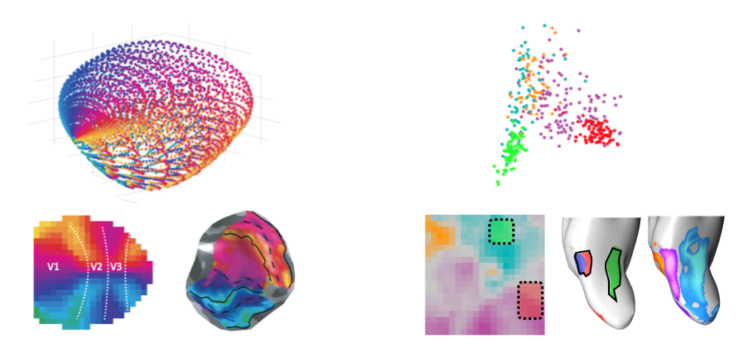Abstract:
Brain organization is incredibly systematic, built through a balance of innately specified cortical patterning and activity-dependent self-organizing mechanisms. In particular, the functional organization of the ventral visual stream has been extensively charted, comprised of distinct early visual areas each with their own retinotopic maps, en route to object-selective cortex with its own map and modules. Leveraging hierarchical deep neural networks and self-organizing algorithms, I will present computational models that can predict these detailed cortical topographies, drawing out links between population coding, connectivity, and content specialization. Broadly, these results provide new insight into long-standing questions of why we have multiple visual areas, and why object cortex has its signature topography. In so doing, these results provide computational evidence for a domain-general account of visual representation, to learn a compressed, smooth, high-fidelity perceptual representation of the experienced visual world.

Biography:
Talia Konkle, Ph.D. is a Professor at Harvard University, in the Department of Psychology, and Center for Brain Science. Konkle completed her undergraduate studies at University of California - Berkeley in Applied Math and Cognitive Science, and her graduate studies at MIT in Brain and Cognitive Sciences.
